There isn’t a clear border that distinguishes Chicago from the suburbs to the south. In fact, the South Side of Chicago appears to continue for miles on end, as historic north-south streets like State, Halsted, Western, and Pulaski run seamlessly into the suburbs. Infrastructure that is characteristic of the city can also be found in these towns, sometimes at higher concentrations, like certain housing stock, industrial corridors, railways, bridges, and even air and water pollution. Their demographics are predominantly Black and brown, with a high percentage of essential workers.
Some things do change, however, as people leave the City of Chicago and enter small municipalities in Illinois. The local politics are more self-contained, public services vary, there’s a modest corporate footprint, local media outlets are few, and access to healthcare is inconsistent. So when COVID-19 hit Chicago aggressively in the spring of 2020, particularly so on the city’s South Side, nearby suburban residents could only brace themselves for what was to come.
Of the thirty-two municipalities that County officials identified as the most vulnerable at the height of COVID-19, half of them were in the south suburbs—twelve of them are clustered right outside the city boundaries: Blue Island, Calumet Park, Riverdale, Dolton, Burnham, Calumet City, Robbins, Posen, Dixmoor, South Holland, Harvey, and Markham.
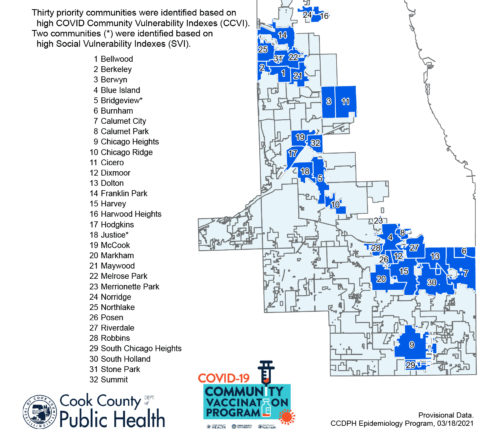
Though it’s not unusual for larger, historically white suburbs in Cook County to have more capital or to have individual departments of health, the majority of the south suburbs cannot even claim their own local hospital. This means that during the onset of COVID-19, the region directly south of the city had to depend heavily on neighboring municipalities with more resources, but also on federal funding and the coordination of Cook County and its county-wide department of health.
The Cook County Department of Public Health (CCDPH) managed from afar all things COVID-19 in low-income municipalities, primarily outreach, testing, and vaccine rollout, using guidance from state and federal authorities. In April 2020, Cook County received approximately $429 million from the CARES Act. They distributed $51 million of the relief among over 300 units of government.
“Historic disinvestment in certain communities within the region has resulted in an unequal capacity for all municipalities to respond to the challenges that COVID-19 presents,” wrote county officials and the Chicago Metropolitan Agency of Planning (CMAP) in an April 2020 report.
Cynthia Rodríguez, director of organizing at Centro de Trabajadores Unidos (CTU), an immigrant workers’ justice organization in the area, understands the uniqueness of the south suburbs. Southland, another name to describe the South and Southwest Suburbs, is mostly made up of people that have either been there for generations or have left Chicago recently, she said.
Ninety-two percent of Dolton’s population is Black. Almost seventy-five percent of Calumet City residents are Black. In Harvey, to the west, two-thirds of the town are Black and a quarter are Latinx. And in Blue Island, a fifteen-minute drive northwest of Harvey, forty-seven percent of residents are Mexican or Latinx.
But there are also people that are arriving from Mexico, Guatemala and Honduras for the first time. In Blue Island, forty-two percent of people over the age of five speak a language other than English at home. CTU offers free legal representation for immigration, labor, eviction and housing, and expungement cases. “We serve both the Southeast Side and the south suburbs because these areas overlap. There is an overlap between people who live in Chicago and work in the south suburbs…and vice versa,” said Rodríguez.
The organization was founded in the Southeast Side of Chicago, yet staff has had to extend their work out to the suburbs. “Here in the South Side of Chicago, we know there aren’t enough services, but if you go further south to Posen, Harvey, Dolton, South Holland, Calumet City, etc., almost all have even less,” said executive director Ana Guajardo.
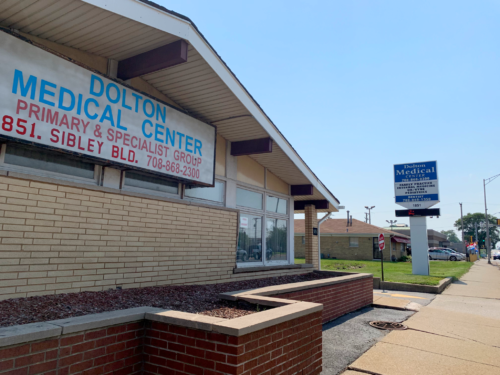
Rodríguez said that local residents of the south suburbs are aware that Chicago has more resources available than they do, and the pandemic magnified this feeling. “Right from the beginning of the pandemic, we were hearing a lot from community members about the lack of resources and how the pandemic only exacerbated… racism and socioeconomic issues. We heard how difficult it was for folks to even access testing sites once they were more prevalent because of [the lack of] transportation.”
Many essential workers that CTU serves brought up concerns about the vaccine. Residents worried about getting side effects and potentially needing to see a doctor after getting the shot, or simply finding the time to make it to a vaccination site, which could translate to time off from work. But Rodríguez said those concerns are rooted in the material lack of healthcare access—and a borderline exploitative workplace culture. “These hesitations that people were bringing up have always been something that we want to take really seriously, because often they come from something much larger and more systemic.”
It is difficult to estimate exactly what percentage of each town’s population are essential workers, but based on the available data, many south and southwest suburbs have a high percentage of residents doing exactly the kind of work that makes them most vulnerable to the spread of COVID-19, such as healthcare support, food preparation, maintenance and more. In Calumet City and Blue Island, between twenty-five and fifty percent of residents in most of the towns’ Census tracts are essential workers.
The share is even higher in Harvey, where anywhere between fifty and seventy-five percent of residents are essential workers. In March, when the majority of essential workers were still not eligible for the vaccine, only five percent of local residents had been fully vaccinated. In early April, Harvey was just under ten percent fully vaccinated, a full five percentage points below the suburban Cook County average at the time.
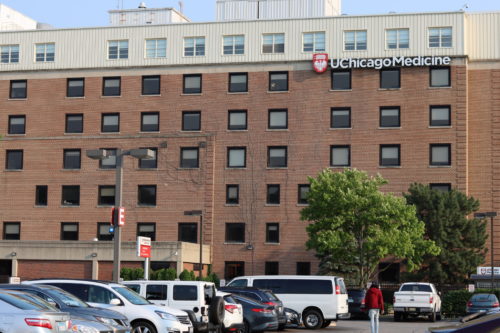
In May, a priority vaccination site opened in Harvey as part of the county’s efforts to increase vaccination rates in Lansing, Calumet City, Chicago Heights, South Chicago Heights, Harvey, South Holland, Dolton, and Burnham. The site at Thornton Township High School was recently offering tickets to Six Flags and a food pantry voucher for people who would get vaccinated.
Harvey Mayor Christopher Clark did not respond to a request for comment by press time.
Guajardo said at first she had to apply for two COVID-related grants to enable organizers at the center to work as health promoters in charge of disseminating information about testing, contact tracing, and vaccinations to residents in Harvey, Calumet City, South Holland, Blue Island, Alsip, and beyond. The plan involved recruiting sixty health promoters who would go to each suburb to distribute masks and hand sanitizer during the beginning of the pandemic to families, schools, churches, local businesses, and workplaces.
Later on, the health promoters visited families door to door and put out tables in the community to inform people about testing and vaccination access as it became available through CCDPH. But getting these types of grants is challenging. Guajardo said nonprofits are competing for funding and most of the support goes north.
Community groups like CTU met multiple times with CCDPH, and through this exchange CCDPH recognized that community members are the best at talking to their own fellow community members about the vaccine and the pandemic in general. “It’s important for health departments to be able to put trust and fund technical support and capacity building towards local community organizations… and community members to do this work directly,” said Rodríguez.
The County health department distributed the CARES Act federal funds to government officials in each of the suburbs in the cluster, ranging from $452,000 to $767,000 per town. The disbursement amounts were based on various criteria including local population size and socioeconomic factors indicating need such as median income, percentage of population under the “Economic Disadvantaged Area” Census designation, and COVID-19 deaths per 100,000 at the time of the allocation.
Cook County Commissioner Brandon Johnson said local bodies of government have the autonomy and flexibility to do whatever they please with the aid, though there were restrictions set by the Trump administration that “were very much intentional to make it difficult or almost impossible for bodies of government to be creative with those resources.”
Click to see the interactive data for vaccines in all of Cook County
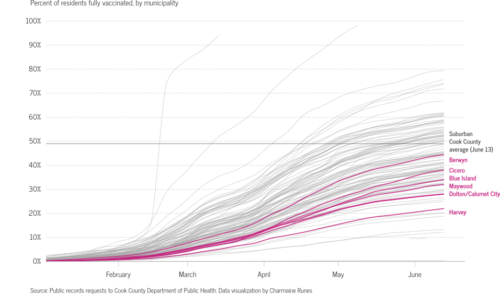
South Side Weekly approached the Village of Dolton and Calumet City on the other side of the Calumet River, which were on the higher end of the relief distribution scale, to learn from officials about their respective COVID-19 strategies as they related to reaching and vaccinating its residents.
Sean Howard, the spokesperson for both municipalities, said the mayors could not speak on the topic since they have both been recently elected. Mayor Tiffany Henyard and Mayor Thaddeus Jones are both first-time Black mayors in Dolton and Calumet City, respectively. Henyard is also the town’s first Black woman to take the seat after having defeated her general election opponent in April of 2020. After several attempts to reach Henyard’s office, her administrative assistant said questions about vaccine accessibility were “irrelevant” because she is a new mayor with a new administration.
Howard did not respond to specific questions about the towns’ plans, but gave a statement by phone to the Weekly: “Mayors Henyard and Jones are more than happy with the response from the county and state and the federal government. Those monies and assistance went a long way in us having to communicate with our residents to get them to truly believe in the entire concept of being vaccinated. We believe that we touched every household within the city to ensure that people were aware… that they were educated about the importance of vaccinations.”
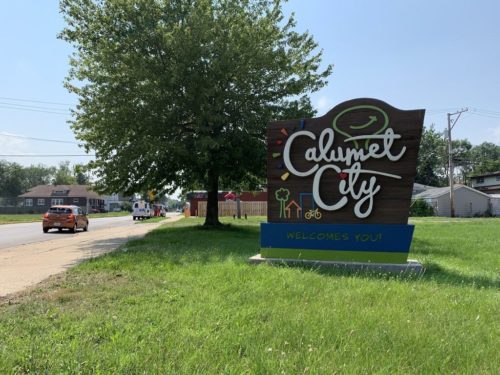
The Weekly interviewed Sixth Ward Alderman James Patton Jr. from Calumet City and also spoke to the fire chief at Calumet City’s Fire Department, Glenn Bachert, in a three-way phone call coordinated by Howard.
Patton said when the federal government first announced that the vaccine would become available, residents were excited. “We finally arrived at the point where, you know, there was kind of at the end of the tunnel.”
Soon after, residents in his ward flooded his office with phone calls about where to get the vaccine and who was eligible. “The number of calls that came into my office from residents… was the most unprecedented amount of calls I’ve ever gotten in the four plus years of being an alderman.”
Guajardo’s family lives in Calumet City. She shared that it was difficult for members of her family to get information about vaccinations. “My family had no clue where in the city to get the vaccine.” She said multiple members of her family called City Hall to ask with no avail. “It is your duty as an elected official to step up on important issues like this and try to bring in those resources into the community,” she added.
But for about two months, Patton said, information about where to access the vaccine was very slow. He said in the beginning it was difficult to provide concrete information to his constituents. “The rollout process was kind of chaotic and not quite as organized at the beginning.” Patton said it took a few weeks until things got more organized in Calumet City. “It took us a little bit of time…to actually get some good, solid information through to our residents.”
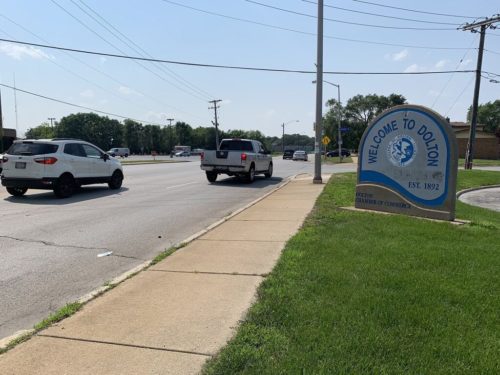
For Calumet City and Dolton, a vaccination site known as a POD or a point of distribution at South Suburban College in South Holland, a ten-minute drive south, was huge; Patton estimated that eighty percent of residents were able to get vaccinated there. “That was incredibly helpful, and I think that was the biggest step in helping us get our community vaccinated quickly.”
“We started out with mass vaccination sites and we’ve moved to PODs, so we’re working with community-based organizations,” said Cook County Board President Toni Preckwinkle in an interview with the Weekly. “I’ve been around the county at a number of those sites where either faith communities or community-based organizations have said, you know, ‘we’ll marshal, we’ll mobilize people in our community.’”
The site opened in April and closed in June, while Chicago opened mass vaccination sites in early February and many remained open until late June.
Fire Chief Glenn Bachert of Calumet City said the fire department was tasked with scheduling vaccine appointments for homebound seniors who were unable to get to a vaccination site or a hospital. He saw things run smoothly, though he noticed residents experienced confusion about eligibility in the beginning. “The [Cook County Health Department] did their best,” Bachert said.
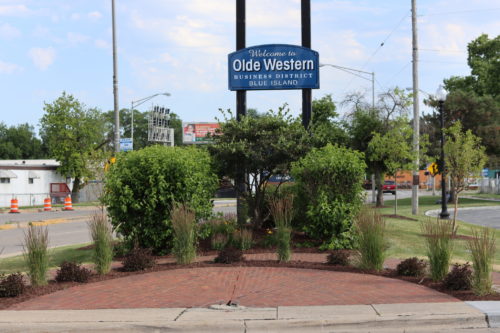
To the west, Blue Island homeowner Leo Oliva said his wife Veronica and two adult kids were vaccinated at the first federally funded mass vaccination site at the United Center, twenty miles north, after they had all contracted and overcome the virus.
Sixty-one-year-old Oliva said he was the first one of his family to get COVID-19 and after three months hospitalized, he feels lucky to be alive. The long-time resident explained that the town’s only hospital, St. Francis, shut down a couple of years ago and is part of a larger trend of companies that have been moving out of Blue Island in the last fifteen years.
At the time, the then-mayor Domingo Vargas called it a devastating closure that was “one of the major, if not the major, employers in the area,” according to the Tribune.
The newly elected mayor, Fred Bilotto, did not respond to a request for comment by press time.
Last March, when Oliva was experiencing symptoms and wasn’t admitted to local clinics, an ambulance rushed him to the neighboring town of Evergreen Park at the Little Company of Mary Hospital, and he was then transferred to Christ Hospital in Oak Lawn. After what seemed to him like an eternity being plugged into a respiratory machine, often unconscious, Oliva was released from the ICU. He said the doctors were amazed at his recovery.
While recuperating in the hospital, the native of Zacatecas, México noticed other immigrant patients struggling to communicate with the nurses, with human translators seldom in sight, so he would offer to help whenever he could. “They were having a hard time with the tablets… A lot of the much older Mexican people, they’re not used to using those types of technologies, they didn’t know they had to talk to the tablets so [the tablets] could translate.”
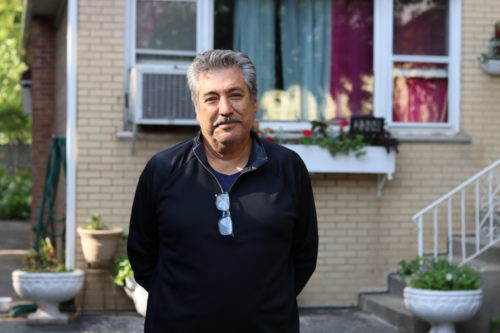
Oliva has since been going to therapy and a pulmonary doctor, and he was vaccinated with the Moderna vaccine by his former employer. But he pointed out that many residents didn’t know how to obtain the vaccine at first. Some people “are not familiarized with a computer and you got to rely on your kids, and if you don’t have any kids, you have to rely on the neighbor.”
The popular vaccination sites in his city are the Blue Island Health Center, the Robbins Community Center, and Walgreens and Jewel pharmacies.
As of mid-June, vaccination rates in south and southwest suburbs were still lagging behind the suburban Cook County average; in Blue Island, forty-six percent of residents had received a complete vaccine series. Calumet City and Dolton were both around thirty-six percent. Harvey was thirty percent fully vaccinated.
“The best way I believe in which we can take advantage of this moment,” said Commissioner Johnson, “is to have some coordination around how the County spends its money with local villages and cities. If we can do that, we could set a new course that actually transformed generations to come. That’s what we’re going to be pushing for.”
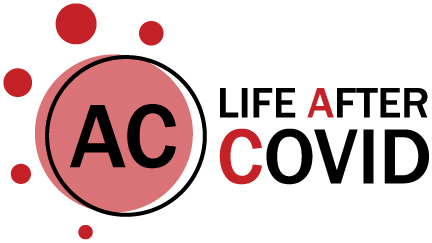
Jacqueline Serrato is the editor in chief of South Side Weekly. She last wrote about where to get a COVID shot in Chicago. Alma Campos is the Weekly’s immigration editor. She last wrote about the legacy of Palestinian solidarity and resistance in Chicago


Thank you for writing about the Southland; as was mentioned, we’re often underrepresented and underserved.
I am so sick of this constant complaining about everything in the black and brown communities. The vaccine is now and has been widely available to everyone and anyone who is not too stupid or too lazy to bother to get it. Educate yourself, get on a bus if need be, and get vaccinated. Learn the language (if necessary) and improve yourself instead of complaining how everything is supposed to be done at your behest. This “victim” mentality is really getting old. Learn how to pull yourself up by the boot straps. Improve yourself if you don”t like your station in life. My God. Where does all of this complaining and self-pity end? Enough already.
The South Suburban Division of Mobile Care Chicago will Vaccinate homebound/Elderly or Disabled Cook County residents at their homes, they can schedule appointments calling 833-308-1988